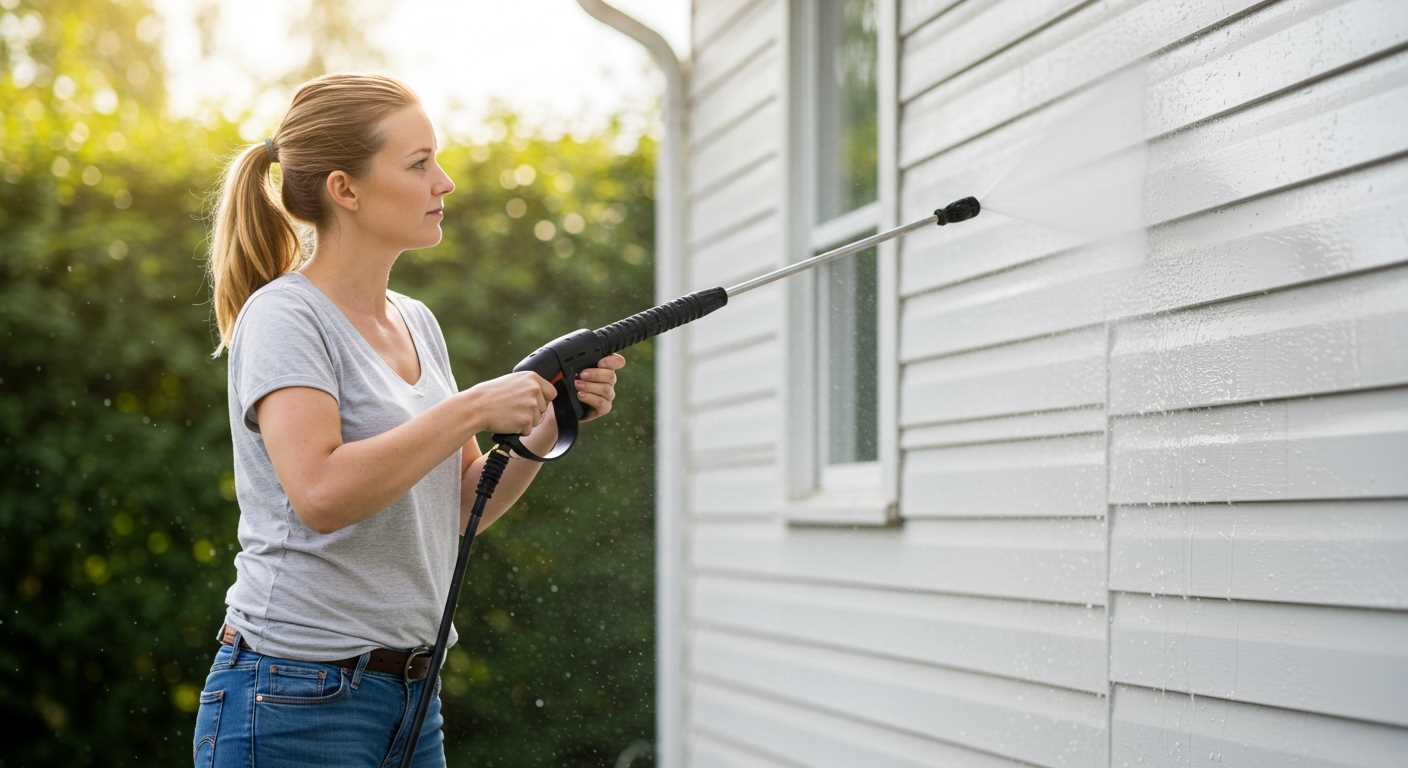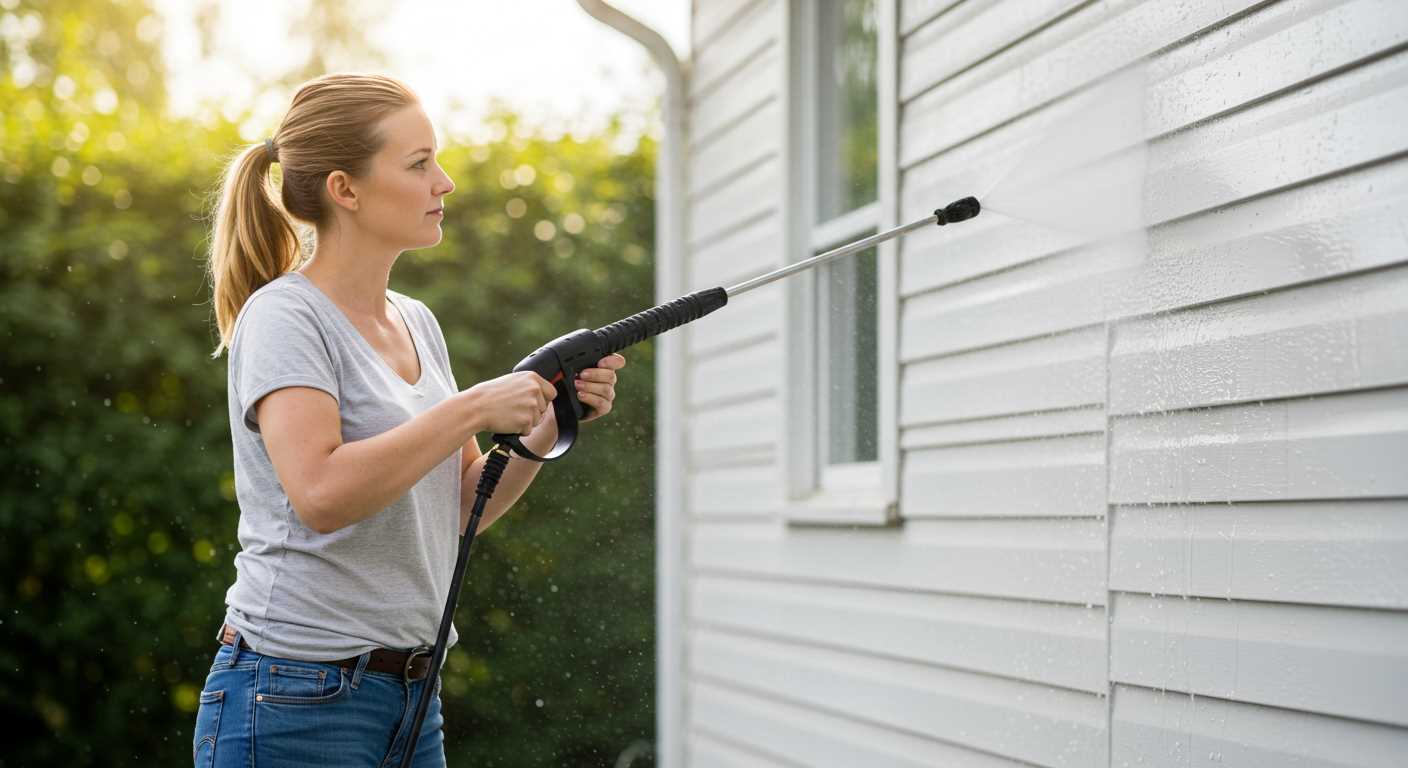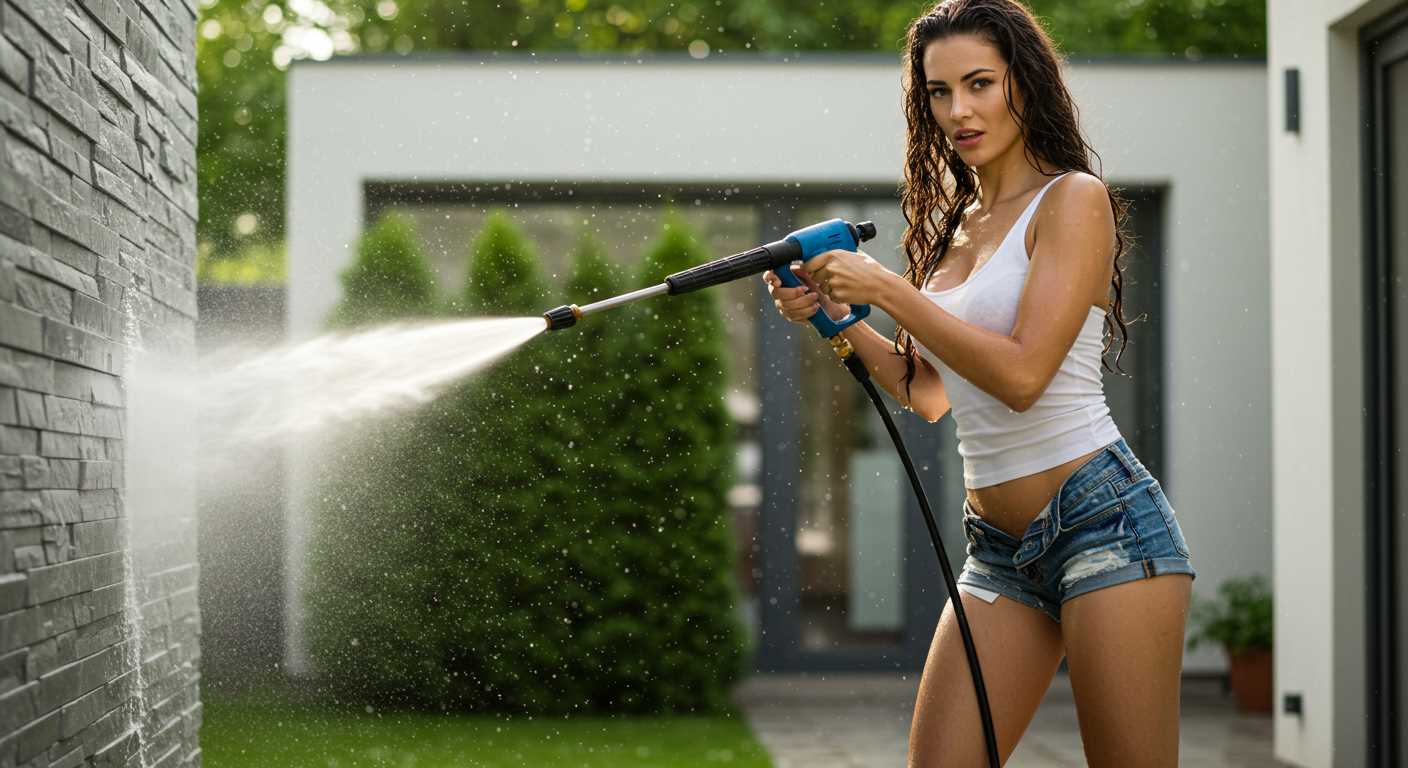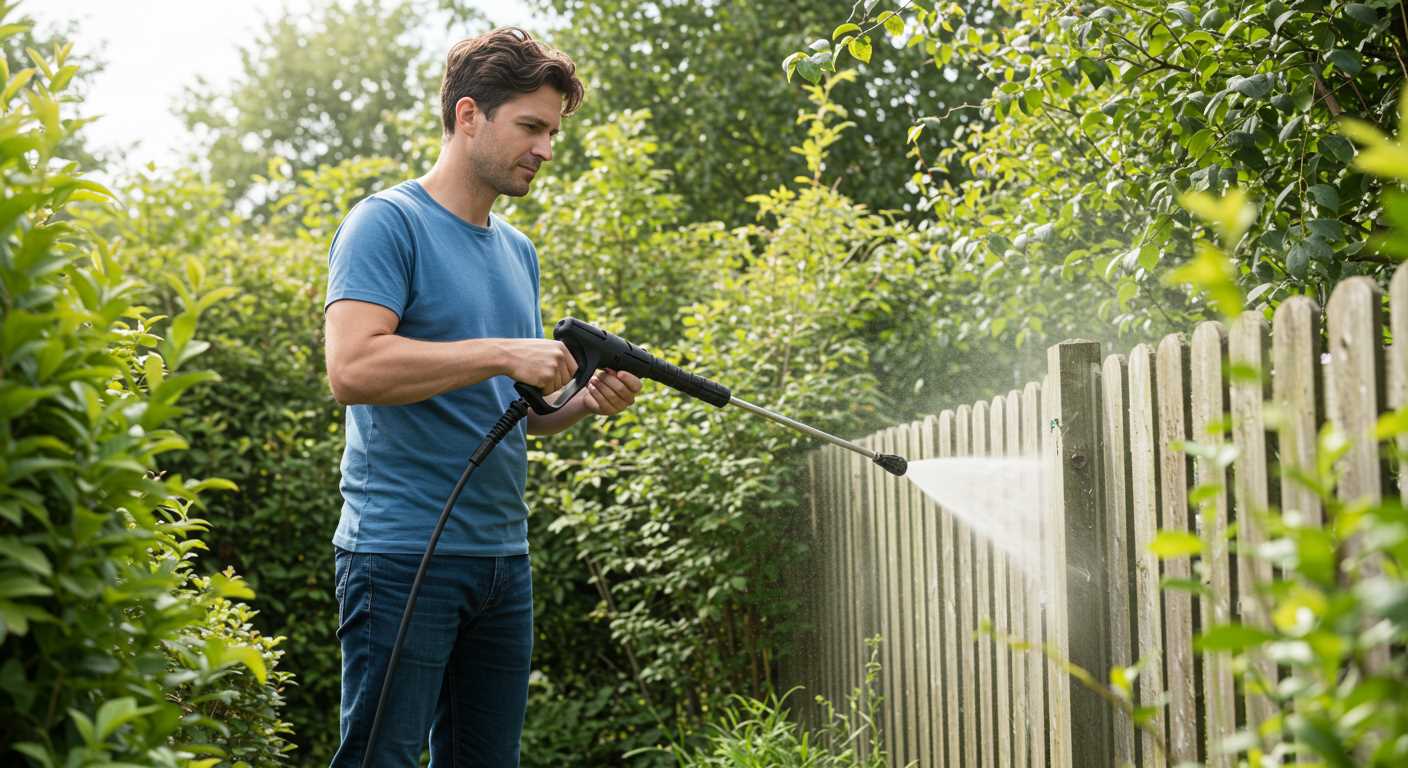


To prevent overheating issues, it’s vital to monitor the operational temperature of your cleaning device closely. During my time with various models, I encountered instances where prolonged use without adequate breaks led to thermal build-up. Always adhere to the manufacturer’s guidelines regarding usage duration and rest intervals.
In my experience, maintaining a clean water inlet filter is crucial. Clogged filters can restrict water flow, causing the motor to work harder and heat up more rapidly. Regular checks and cleanings can save you from overheating problems down the line.
Another vital aspect is ensuring that the ambient temperature is suitable for operation. High external temperatures can exacerbate the risk of overheating. If you’re working in a particularly warm environment, consider scheduling cleaning tasks during cooler parts of the day or providing shade for your machine.
Pay attention to the power supply as well. An inconsistent or underpowered electrical source can strain the device, leading to increased heat generation. Using an appropriate extension cord, if needed, can help maintain a stable power flow.
Lastly, listen for unusual noises or changes in performance. If you notice any signs of distress, it’s best to turn off the device and let it cool down. Ignoring these warning signs can lead to more severe damage. Taking these small steps can significantly extend the lifespan of your equipment and ensure it operates smoothly.
Overheating Risks in High-Pressure Cleaners
To prevent issues with excessive heat, always follow the manufacturer’s guidelines for continuous operation. In my experience, using the unit for extended periods without breaks can lead to thermal stress. It’s advisable to take short pauses after about 30 minutes of use. This allows the motor to cool down and helps maintain optimal performance.
Regular maintenance is key. I recall a situation where a friend neglected to clean the inlet filter, causing the unit to struggle under heavy load. The result? An unnecessary temperature spike that could have been avoided. Make it a habit to inspect and clean filters regularly.
| Tips to Avoid Overheating | Frequency |
|---|---|
| Clean the inlet filter | Every 5 uses |
| Check for blockages in hoses | Before each use |
| Allow cooling breaks | Every 30 minutes |
| Inspect seals and connections | Monthly |
Another common mistake is using hot water. Stick to cold or lukewarm water as specified in the product manual. Using high-temperature water can increase the risk of overheating, leading to potential damage. I learned this the hard way during a job where I mistakenly connected to a hot water source. The unit struggled, and I had to replace a damaged seal afterwards.
Lastly, understand the environment where you operate your equipment. Extreme temperatures, especially high heat, can exacerbate overheating issues. If you’re working in direct sunlight, consider placing the unit in a shaded area or using a tarp to shield it. This simple step can prolong the life of your equipment.
If you’re curious about how technology impacts everyday tools, you might find value in exploring whether are digital cameras better than cell phones. Just as with cleaning equipment, understanding the tools at your disposal can make all the difference.
Understanding Pressure Washer Components and Heat Generation
To ensure optimal operation, focus on the key components that contribute to heat production in these cleaning devices. Understanding these parts can help mitigate overheating issues and extend the lifespan of your equipment.
Motor and Pump Interaction
The motor is responsible for powering the pump, which generates the high-pressure water stream. If the motor operates under excessive strain, it generates heat. Here are some factors to watch:
- Inadequate ventilation: Ensure that the motor has sufficient airflow around it to dissipate heat.
- Blocked intake: Regularly check for obstructions in the air intake that can lead to overheating.
- Continuous use: Avoid prolonged operation without breaks; motors need time to cool down.
Water Temperature and Flow Rate
Water temperature significantly impacts the performance of your equipment. High temperatures can lead to thermal stress on the components. Consider the following:
- Cold water usage: Always use cold water unless the unit specifies otherwise. Hot water can increase the risk of overheating.
- Flow rate: Ensure the unit’s flow rate matches the manufacturer’s specifications. Insufficient water flow can cause the pump to run hotter than normal.
- Regular maintenance: Check hoses for kinks or blockages that can restrict water flow and lead to increased heat generation.
By paying attention to these components and practices, you can significantly reduce the likelihood of your equipment experiencing excessive heat and maintain its efficiency for years to come.
Common Signs of Overheating in Karcher Pressure Washers
Watch for unusual sounds during operation. If you notice a distinct high-pitched whine or grinding noise, it could indicate that components are under excessive strain, potentially leading to thermal issues.
Pay attention to the output temperature of the water. If it feels excessively hot to the touch, this could be a sign that the machine is struggling to regulate its internal temperature. A comfortable performance should produce warm, not scalding, water.
Monitor the pressure output. An unexpected drop in pressure can suggest that the pump is experiencing difficulties, possibly due to overheating. Consistent and reliable pressure is crucial for effective cleaning.
Check for leaks or steam. If you observe steam escaping from connections or components, this is a clear indication of overheating. Addressing this promptly can prevent further damage.
Keep an eye on the machine’s housing. If you notice any signs of warping or melting, it’s essential to stop using the unit immediately. This damage indicates that internal temperatures are reaching dangerous levels.
Lastly, be alert for the smell of burnt plastic or rubber. A burning odour is a serious sign that something is wrong and immediate action should be taken to prevent further complications.
For those looking to invest in a reliable cleaning solution for outdoor spaces, consider an electric pressure washer for patio. Choosing the right model can help avoid overheating incidents and ensure efficient operation.
Factors That Contribute to Overheating Issues
Regular maintenance is crucial. Neglecting to clean filters or screens can lead to restricted water flow, causing the unit to strain and generate excess heat. I recall a time when a client experienced frequent shutdowns due to a clogged inlet filter. After a simple cleaning, the machine operated smoothly again.
Water Quality and Temperature
Using hard water can create mineral buildup inside the system, which hampers performance. I once had a customer who didn’t realise that their local water supply was particularly hard; this led to repeated failures. Switching to distilled water or installing a water softener can mitigate this problem significantly.
Operating Conditions
Ambient temperature plays a role too. Operating in direct sunlight or high ambient temperatures can affect efficiency. I noticed differences in performance when working in shaded areas versus sun-exposed locations. Monitoring the environment can help prevent issues related to overheating.
How to Prevent Overheating During Use
Regular breaks during operation are crucial. I often advise users to pause every 15-20 minutes, allowing the machine to cool down. This practice not only prolongs the life of the equipment but also enhances its performance. During these breaks, inspect the unit for any signs of wear or damage.
Maintain Clean Filters
Clogged filters can impede airflow and lead to increased temperatures. I’ve encountered many instances where a simple cleaning of the filters made a significant difference. Always check and clean the filters regularly to ensure optimal airflow. This is especially important if you’re working in dusty or dirty environments.
Monitor Water Supply
A consistent and adequate flow of water is vital. Using a hose that’s too long or kinked can reduce water pressure, causing the unit to work harder. I’ve seen machines struggle due to insufficient water supply, which directly impacts their ability to dissipate heat. Ensure your hose is the right length and free of obstructions.
Proper maintenance of the unit is non-negotiable. Regularly servicing the equipment, including checking for leaks, inspecting seals, and ensuring all components are functioning correctly, can prevent many issues before they arise. From my experience, a well-maintained machine operates cooler and more efficiently.
Recommended Maintenance Practices to Avoid Overheating
Regular cleaning of the intake filter is crucial. A clogged filter restricts water flow, causing the motor to work harder, which can lead to excessive heat. Check it after every few uses and clean it thoroughly to ensure optimal performance.
Inspect the high-pressure hose for any signs of wear or damage. A compromised hose can impede water flow, increasing the risk of thermal issues. Replace any damaged sections immediately to maintain efficiency.
Routine Checks and Fluid Levels
Ensure that the oil levels are adequate if your unit uses oil for lubrication. Low oil can cause the motor to overheat. Check the oil level regularly and change it according to the manufacturer’s recommendations. This step is often overlooked, yet it plays a significant role in maintaining safe operating temperatures.
Storage and Environment
Store the equipment in a shaded area or a climate-controlled environment. Extreme heat can degrade components over time, making them more susceptible to thermal problems. In colder weather, allow the unit to warm up before use to prevent sudden temperature fluctuations that can strain the motor.
| Maintenance Task | Frequency |
|---|---|
| Clean Intake Filter | After every few uses |
| Inspect High-Pressure Hose | Before each use |
| Check Oil Levels | Monthly |
| Inspect for Leaks | Weekly |
| Store in Controlled Environment | Always |
Follow these practices diligently, and you’re likely to experience fewer thermal issues, extending the lifespan of your cleaning equipment.
Troubleshooting Overheating Problems in Karcher Models
First and foremost, if you notice excessive warmth in your cleaning unit, shut it down immediately. In my experience, this quick action can prevent further damage. I recall a time when I ignored a warning sign, and it resulted in costly repairs. Always prioritise safety and equipment longevity.
Identifying the Source of Heat
Check the water supply first. Insufficient flow can lead to overheating. I once encountered a situation where a customer’s garden hose was kinked, causing the machine to struggle. Ensure your water source is adequate and free from blockages. Next, inspect the nozzle. A clogged nozzle restricts flow and can cause temperatures to rise. Regularly clean or replace nozzles to avoid this issue.
Component Examination
Look closely at the pump and motor. Wear and tear can lead to inefficiency, causing components to heat up. I remember replacing a worn-out seal that significantly reduced the machine’s operating temperature. Don’t overlook regular inspections; they are key to maintaining performance. Lastly, consider the ambient temperature and working environment. High temperatures can exacerbate existing issues, so work in the coolest conditions possible.
When to Seek Professional Help for Overheating Issues
If you notice persistent issues with excessive heat during operation, it’s time to consult a professional. Ignoring these signs can lead to severe damage and costly repairs.
Signs Indicating Professional Assistance is Necessary
- Continuous tripping of thermal fuses or circuit breakers.
- Unusual noises, such as grinding or clanking, emanating from the motor.
- Visible smoke or odour indicating electrical malfunction.
- Inconsistent performance despite following all maintenance guidelines.
Specific Situations Requiring Expert Intervention
- If the device is overheating after a short period of use, despite proper cooldown breaks.
- Repeated failures of components related to temperature regulation, such as thermostats or pressure relief valves.
- When the equipment has been exposed to severe conditions, such as extreme temperatures or moisture, raising concerns about potential internal damage.
In my experience, many users attempt to fix issues themselves, often leading to further complications. Engaging a qualified technician ensures accurate diagnosis and repair, preserving the longevity of your equipment.




.jpg)


